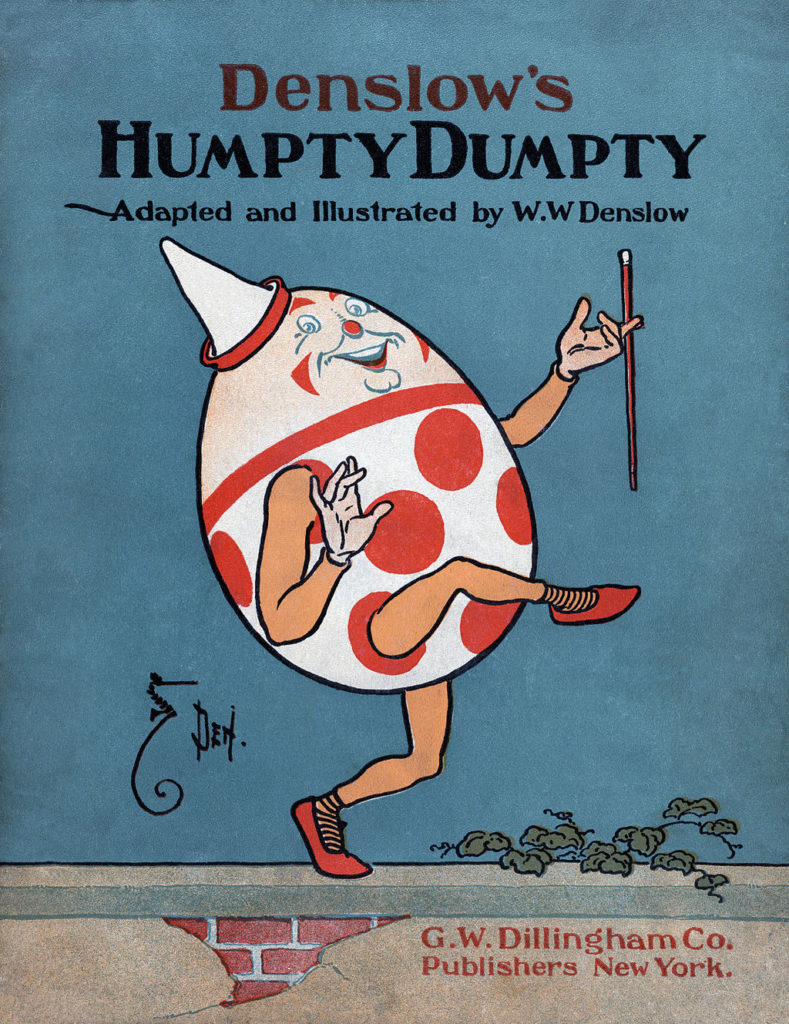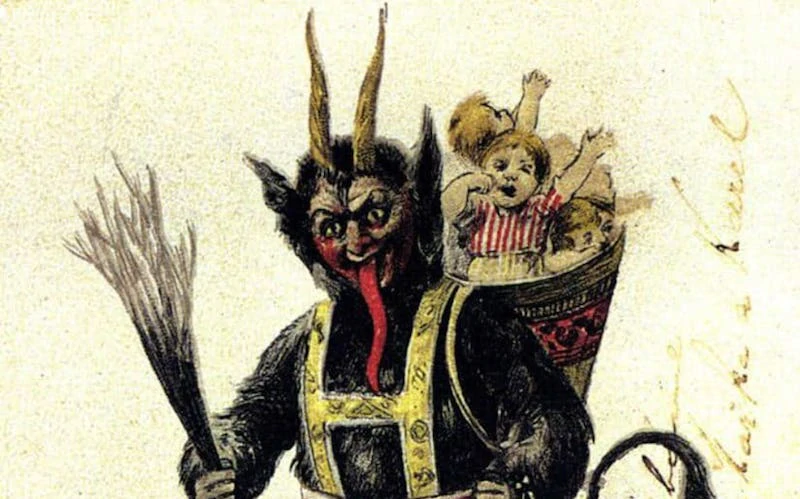Last updated on January 24th, 2023 at 10:44 pm
Nearly all children who grew up during the twentieth century are familiar with the nursery rhyme of Humpty Dumpty. This modern version of the short rhyme runs as follows:
“Humpty Dumpty sat on a wall,
Humpty Dumpty had a great fall;
All the King’s horses
And all the King’s men,
Couldn’t put Humpty together again.”
So far, the story is quite simple. But, there is a much wider story to how this nursery rhyme came into existence and developed over five or six hundred years. This is the story of the strange historical origins of the Humpty Dumpty nursery rhyme.

The Modern Origins of Humpty Dumpty
Humpty Dumpty has been around for centuries, but the modern, standardized version of the rhyme is largely derived from the version published by an English publisher and organist Samuel Arnold in 1797. This ran:
“Humpty Dumpty sat on a wall,
Humpty Dumpty had a great fall.
Four-score Men and Four-score more,
Could not make Humpty Dumpty where he was before.”
Slight evolutions occurred after that throughout the nineteenth century until the twentieth-century version was arrived at.
Was Richard III the inspiration for Humpty Dumpty?
The Humpty Dumpty rhyme can be traced back to at least the late fifteenth century and is an allusion to King Richard III. Richard III briefly reigned as King of England between 1483 and 1485 after his brother, King Edward IV, passed away.
Edward was to be succeeded by his son and namesake, Edward V, but as the young Edward was a minor in 1483, Richard was chosen to serve as regent until he reached adulthood.
Richard can hardly be said to have honored his brother’s faith in him and quickly placed young Edward and his younger brother Richard in the Tower of London, from where they never reappeared.
The assumption is Richard had his two young nephews killed, and thereafter he usurped the throne. He did not go unchallenged in this, and Henry Tudor, a Welsh upstart, overthrew him in 1485 by defeating Richard in combat at the Battle of Bosworth Field.

All of this is relevant to Humpty Dumpty because Richard suffered from scoliosis and was a hunchback.
Additionally, his horse was allegedly called ‘Wall.’ So, in later years when figures such as the great playwright, William Shakespeare, wrote about Richard, they emphasized his humped back.
By modern standards of ethics, it hardly seems acceptable to refer to somebody with a physical disability as ‘Humpty Dumpty,’ but this seems to have been a reference to Richard’s humped back.
When the rhyme refers to him falling off of a ‘wall,’ this would seem to be a reference to his horse, which Richard is recorded as falling off of at the Battle of Bosworth Field, and the King’s soldiers and men are a reference to his forces at the battle being unable to win the day against Henry Tudor’s army.
Other Possible Origins of Humpty Dumpty
Richard III’s story is the most plausible origin of the Humpty Dumpty rhyme, but several others exist.
Some suggest that Humpty Dumpty is a derivative of a Swedish or Germanic fairy tale character, many of which were immortalized by the Brothers Grimm and Hans Christian Andersen in the nineteenth century.
There is also a plausible link to seventeenth and eighteenth-century slang terms. For instance, Humpty Dumpty was a drink consumed in Stuart-era Britain composed of a mix of brandy and ale.

This, combined with other pejorative terms which were used at the time to refer to people of shorter stature, would suggest that at least in the eighteenth century before Arnold publicized the largely modernized version of the rhyme, Humpty Dumpty was a bawdy, insulting comedic figure of some sort which term was widely applied to people when inebriated.
Humpty Dumpty and the English Civil War
One final interpretation is that Humpty Dumpty was the name of a large piece of ordnance, or a canon, which was mounted on the walls of the town of Colchester in the mid-seventeenth century.
During the 1640s, England, Scotland, Wales, and Ireland were enveloped by a series of conflicts collectively known as the Wars of the Three Kingdoms or the English Civil War in England.
Colchester was besieged during the civil war between King Charles I and the English Parliament in 1648, and Humpty Dumpty was the name of a huge canon atop the town’s walls.
The Royalists, the King’s supporters, held the town while the Parliamentarians besieged it. During this, the wall which Humpty Dumpty was perched on top of was shattered by parliamentary ordnance fire, and Humpty Dumpty fell off this great wall.
The King’s Men, in this interpretation, were the Royalists, who could not remount the canon and eventually, after an eleven-week siege of Colchester, were forced to surrender to the Parliamentary forces.
Again, the theory that the Humpty Dumpty rhyme originates in the siege of Colchester in 1648 is speculative.
What seems clear from all of this is that there is no one origin story for the Humpty Dumpty rhyme. Rather, it was a rhyme inherited from the early modern world from medieval times.
Each successive generation reimagined it to suit the circumstances of their age, whether that was Richard III falling from his horse in 1485, a canon falling from the walls of Colchester in 1648, or somebody who had drank too much brandy and ale falling over in the seventeenth or eighteenth centuries.
Each generation brought its interpretation to the rhyme we all know today.
Sources
Iona Opie and Peter Opie (eds.), The Oxford Dictionary of Nursery Rhymes (Second Edition, Oxford, 1997), pp. 213–215.
Chris Skidmore, Bosworth: The Birth of the Tudors (London, 2014).
Opie and Opie (eds.), Oxford Dictionary of Nursery Rhymes, pp. 213–215.
Alf Thompson, ‘The Siege of Colchester, 1648: The Earl of Northampton’s Regiment Orders of the Day’, in The Sealed Knot, Vol. 32, No. 2 (April, 2000).

